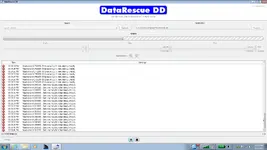R
RWhite
Well-known member
I can't find anything to suggest that an internal drive is physically different from an external drive, but who knows, maybe it is.
Either way, seems you've been unlucky, Op.
There is absolutely no difference at all between "external" and "internal" drives. I always recommend that people buy an external case and then put their own hard drive in it. Some of the external drives that you buy have cases that are permanently sealed shut. They do this for only one reason - so that when the drive fails you have to buy a new case as well.
All modern hard drives will auto-park their heads when they power off. So long as you are gentle with them, and wait until they are COMPLETELY off before you pick them up (I say wait at least 10 seconds), then you should have no problems. However all drives do eventually fail, and sometimes it can seem quite random.


 ). If I was you I'd put it in the freezer and just run dd over the whole thing. Copy it bit for bit and worry about making sense of the bits later, rather than trying to read them as files now (which is causing the OS to try to re-read the data repeatedly - hence - cyclic redundancy - and killing the drive ever more quickly). dd is, of course, completely free and can be run from any live cd.
). If I was you I'd put it in the freezer and just run dd over the whole thing. Copy it bit for bit and worry about making sense of the bits later, rather than trying to read them as files now (which is causing the OS to try to re-read the data repeatedly - hence - cyclic redundancy - and killing the drive ever more quickly). dd is, of course, completely free and can be run from any live cd.
